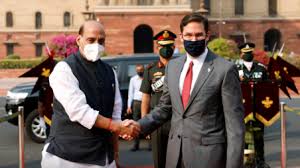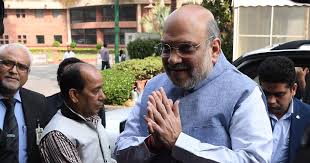Top News
‘This was possible only because it was India’

New Delhi: “Make no mistake. This (nuclear deal) has been possible only because it was India.”
This was how representatives of some of countries like Brazil, South Africa, Mexico and others confided to Indian diplomats after the waiver by the powerful Nuclear Suppliers’ Group (NSG) cartel was extended to India in September 2008, months after the initialing of the Indo-US nuclear deal that has in many ways changed the way the world looked at India, transformed its relationship with the US and made India a major global player.
Intense, arduous behind-the-scene negotiations by diplomats of India and the US, with the mood in the Indian camp swinging between dark despair at times to elation at a breakthrough, helped clinch the landmark Indo-US civil nuclear deal exactly a decade ago (it was initialed in Washington on July 18, 2005) with the leaders of the then two countries playing a key enabling role, said a former top Indian diplomat who was involved in the negotiations.
Former foreign secretary Shyam Saran, and subsequently the prime minister’s special envoy on the deal, who was closely involved in the negotiations along with others, including Shivshankar Menon and M.K. Narayanan and a battery of Indian diplomats that included present Foreign Secretary S. Jaishankar, recounted some major facets of the historic deal at a packed lecture here Monday evening.
The civil nuclear deal, which later became an agreement, was driven by the two leaders – former prime minister Manmohan Singh and President George W. Bush – both of who weighed in decisively at critical moments to tide over any impasse in talks, said Saran at a now-it-be-told talk on ‘The Indo-US civil nuclear Agreement: Ten years after’.
He said the inking of the civil nuclear deal was followed by even more intense negotiations, this time with members of the NSG, to convince them on a waiver for India.
“More complex negotiations were involved in getting the NSG on board than for the Indo-US nuclear deal,” Saran said. The 45 members countries came on board, despite a move by China initially to use the smaller countries as proxies to voice Beijing’s opposition to the deal.
Post the conclusion of the agreement in late 2008 “a presumption of denial by the US in terms of technology became a presumption of approval”, said Saran, adding that the deal unlocked the doors for India in the international civil nuclear field.
He said that President Bush was very keen for the US to conclude the deal with India, and even put his personal credibility on line for it. Bush believed that since India was a liberal, plural democracy like the US, America needed to help it in order to “preserve the space for liberal, plural democracies”, said Saran at the Changing Asia Series lecture organized by India Habitat Centre and think tank Society for Policy Studies (SPS).
For Bush, the deal was “not about nuclear reactors”, said Saran, recounting an incident during then prime minister Manmohan Singh’s visit to the White House in 2008 after the Indo-US civil nuclear deal cleared the US Congress.
During the dinner at the White House, when both the sides were congratulating each other for the success in getting the legislation through, then US Secretary of State Condoleezza Rice got up and addressed Singh, saying “Mr Prime Minister, the US has done a lot of heavy lifting on your behalf to get the deal through. I hope American businesses will be able to profit for that and American nuclear plants can be sold to India”. But Bush stopped her mid sentence and said “I do not care if there is not even one single nuclear reactor sold by the US. For me this was not about selling nuclear reactors to India, this was about our relationship.”
“As far as India was concerned, there was no doubt in President Bush’s mind that it was one of the most important relationships for the US,” recounted Saran.
To a question, he said “If we had not undertaken the very intensive diplomacy that we did, we would not have got this deal through. It was very important that the political leaders gave the lead, but the groundwork, the nuts and bolts, were done by the professional diplomats. This is part of the culture of the ministry of external affairs, not always appreciated, because it is not always visible.” He also added that then Foreign Minister Natwar Singh played a valuable role at a critical point in the preliminary negotiations.
To another question, he said that Manmohan Singh and Prime Minister Narendra Modi have different leadership styles.
“But given the negative legacy here of visa denial to Prime Minister Modi by the US, who would have expected that he would have taken the lead, even more than the previous government, in actually forging a much closer relationship with the US,” he said.
He said Manmohan Singh not only carried through the initiatives on closer India-US ties launched by the Atal Bihari Vajpayee led NDA government, “but also updated it”.
“Something similar was seen with the Modi government, not only on taking forward the initiatives, but also to a higher level.”
Uday Bhaskar, director, SPS reiterated that this historic agreement removed the long festering estrangement in the India-US relationship and was enabled by a favorable combination of circumstances and perspicacious leadership on both sides. “Yes, the US did more of the heavy-lifting and both President Bush and Prime Minister Singh need to be applauded for their tenacity in the face of domestic criticism,” he added.
Entertainment
Casino Days Reveal Internal Data on Most Popular Smartphones

International online casino Casino Days has published a report sharing their internal data on what types and brands of devices are used to play on the platform by users from the South Asian region.
Such aggregate data analyses allow the operator to optimise their website for the brands and models of devices people are actually using.
The insights gained through the research also help Casino Days tailor their services based on the better understanding of their clients and their needs.
Desktops and Tablets Lose the Battle vs Mobile
The primary data samples analysed by Casino Days reveal that mobile connections dominate the market in South Asia and are responsible for a whopping 96.6% of gaming sessions, while computers and tablets have negligible shares of 2.9% and 0.5% respectively.
The authors of the study point out that historically, playing online casino was exclusively done on computers, and attribute thе major shift to mobile that has unfolded over time to the wide spread of cheaper smartphones and mobile data plans in South Asia.
“Some of the reasons behind this massive difference in device type are affordability, technical advantages, as well as cheaper and more obtainable internet plans for mobiles than those for computers,” the researchers comment.
Xiaomi and Vivo Outperform Samsung, Apple Way Down in Rankings
Chinese brands Xiaomi and Vivo were used by 21.9% and 20.79% of Casino Days players from South Asia respectively, and together with the positioned in third place with a 18.1% share South Korean brand Samsung dominate the market among real money gamers in the region.
Cupertino, California-based Apple is way down in seventh with a user share of just 2.29%, overshadowed by Chinese brands Realme (11.43%), OPPO (11.23%), and OnePlus (4.07%).
Huawei is at the very bottom of the chart with a tiny share just below the single percent mark, trailing behind mobile devices by Motorola, Google, and Infinix.
The data on actual phone usage provided by Casino Days, even though limited to the gaming parts of the population of South Asia, paints a different picture from global statistics on smartphone shipments by vendors.
Apple and Samsung have been sharing the worldwide lead for over a decade, while current regional leader Xiaomi secured their third position globally just a couple of years ago.
Striking Android Dominance among South Asian Real Money Gaming Communities
The shifted market share patterns of the world’s top smartphone brands in South Asia observed by the Casino Days research paper reveal a striking dominance of Android devices at the expense of iOS-powered phones.
On the global level, Android enjoys a comfortable lead with a sizable 68.79% share which grows to nearly 79% when we look at the whole continent of Asia. The data on South Asian real money gaming communities suggests that Android’s dominance grows even higher and is north of the 90% mark.
Among the major factors behind these figures, the authors of the study point to the relative affordability of and greater availability of Android devices in the region, especially when manufactured locally in countries like India and Vietnam.
“And, with influencers and tech reviews putting emphasis on Android devices, the choice of mobile phone brand and OS becomes easy; Android has a much wider range of products and caters to the Asian online casino market in ways that Apple can’t due to technical limitations,” the researchers add.
The far better integration achieved by Google Pay compared to its counterpart Apple Pay has also played a crucial role in shaping the existing smartphone market trends.
Content provided by Adverloom

























